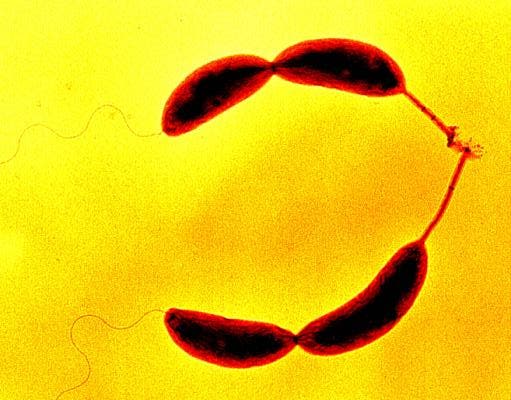We tend to believe that memory is a luxury reserved only for animals with brains, such as humans and other higher organisms. But even simple lifeforms such as bacteria can employ a form of memory, albeit relatively short in duration.

Image via wikimedia
Memory doesn’t work in bacteria as it does in humans — shocking, I know. But while they can’t relive the days of their youth or their (probably) exciting first division, bacteria are able to learn from and increase resistance to past stressors. An example of this phenomena is the salinity-shock; bacteria exposed to moderate levels of salt are able to survive subsequent exposures to much higher, otherwise deadly concentrations of it.
On an individual scale this adaptation is short-lived — after thirty minutes, survival rates drop down to pre-exposure levels. Two ETH Zurich microbiologists, Roland Mathis and Martin Ackermann have now discovered that when entire populations are considered however, the longevity of this phenomena is dramatically increased. They experimented with Caulobacter crescentus, a bacterium pervasive in fresh and sea water.
They placed C. crescentus on little adhesive stalks to fix them on a glass substrate inside eight microfluidic chips; as they divided, the mother cell would remain inside the chip and the daughter would be washed out. Then they reconstructed cell-division cycles and survival probabilities using a technique known as time-lapse microscopy.

Experimental set-up with the bacterium C. crescentus in microfluidic chips: each chip comprises eight channels, with a bacterial population growing in each channel.
Image credits Stephanie Stutz/ETH Zurich
Compared to control cells, individually-exposed bacteria had better survival rates to salt that lasted up to about 30 minutes. But when whole populations were exposed this adaptation lasted for up to two hours, hinting to a kind of bacterial “collective memory.”
The team explains that when a population is exposed to salt, the resulting stress causes all cells to delay their division cycle, synchronizing it throughout the culture — and survival of any individual cell is dependent on what part of the cell cycle it is in at the time of the second exposure.
As a result, a previously exposed population’s sensitivity changes over time. They may become more tolerant to future stress events, but might also become more susceptible to the stressor — it all depends on the state they are in their cycle of division at the time.
“If we understand this collective effect, it may improve our ability to control bacterial populations,” Martin Ackermann comments.
The findings could go a long way in improving our medical knowledge, for example understanding how pathogens develop drug resistance. But it’s also relevant in other fields of science, such as improving bacterial performance in industrial processes and wastewater treatments.
The full paper titled “Response of single bacterial cells to stress gives rise to complex history dependence at the population level” has been published online in the journal Proceedings of the National Academy of Sciences and is available here.









